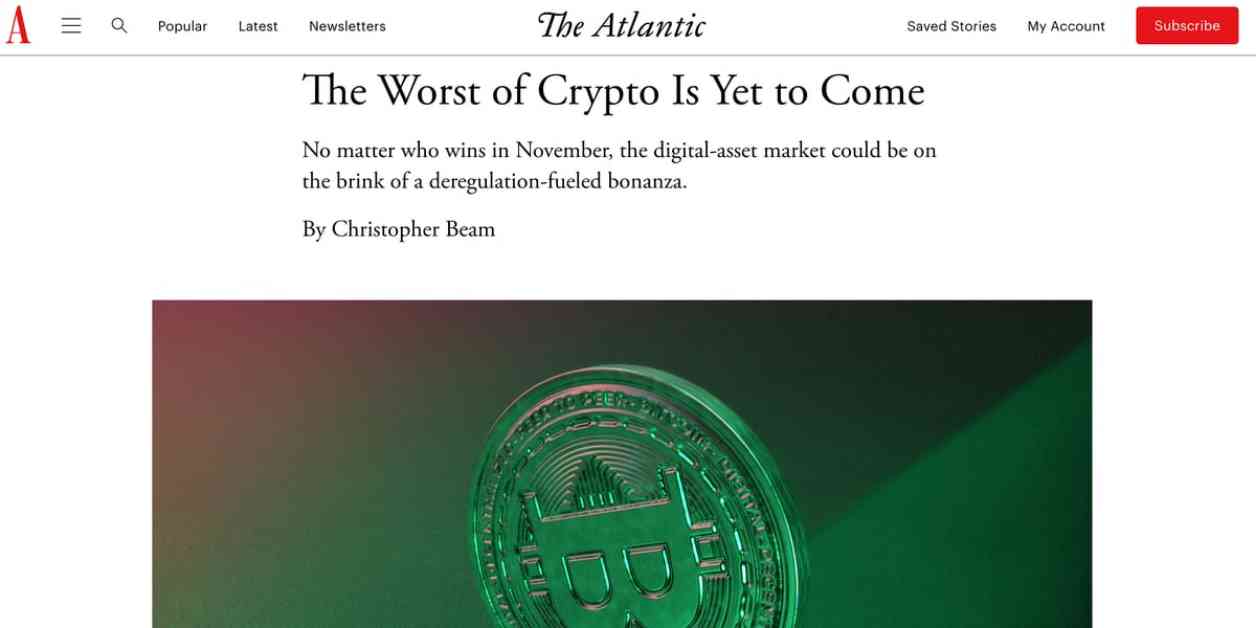The fascination with the dark side of cryptocurrency has been a hot topic lately, with social media feeds flooded with crypto enthusiasts touting the success of bitcoin. But how did we get here? Why were we told that Bitcoin had died? Viral social media campaigns like Elizabeth Warren’s “Anti-Crypto Army” have contributed to painting crypto in a negative light, leading to comparisons with the tarnished reputation of investment banking post-2008 financial crisis.
While the crypto-is-a-scam narrative gained traction after FTX’s collapse in 2022, critics of the industry are now viewed as lazy rather than insightful. Despite the negativity surrounding cryptocurrency, there are several areas within the sector that are making significant strides in solving real-world problems at scale.
Stablecoins, for example, are gaining widespread adoption, especially in emerging markets where local currencies are volatile. These digital assets are pegged to fiat currencies like the U.S. dollar, providing stability and accessibility to users in regions with limited banking infrastructure.
Decentralized finance (DeFi) is another game-changer in the crypto space, allowing users to lend, borrow, and trade assets without the need for traditional financial intermediaries. This opens up opportunities for financial inclusion, particularly in areas with restricted access to banking services.
However, not all crypto projects are created equal. Memecoins, which derive their value from internet hype rather than utility, have divided opinions within the crypto community. Dogecoin, a popular memecoin endorsed by Elon Musk, has a market value that rivals companies in the S&P 500, despite lacking a clear business model or product. Critics argue that memecoins undermine the true potential of the crypto sector.
Following Sam Bankman Fried’s controversial exit in 2022, a new trend has emerged in the form of decentralized physical infrastructure networks (DePIN). These networks leverage crypto technology to build decentralized infrastructure, allowing individuals to contribute resources in exchange for rewards. The rise of DePIN projects is reshaping legacy industries and challenging traditional market structures.
One standout example is Helium, a network that deploys mini-towers and hotspots to create a decentralized mobile coverage network. With over 120,000 active mobile plans, Helium provides affordable connectivity by decentralizing network operations. Despite facing criticism and price volatility, Helium has evolved into a cellular provider, highlighting the adaptability and resilience of crypto projects.
The misrepresentation of crypto in the media mirrors the misunderstandings surrounding Trump’s presidency, where certain actors are unfairly generalized to represent the entire industry. While there are legitimate concerns about abuse and fraud within the crypto space, the potential for innovation and positive impact cannot be ignored. As stablecoins, DeFi, and DePIN projects continue to gain traction, it is evident that crypto’s best days are yet to come.
In conclusion, while skepticism and mistrust may linger in the public perception of cryptocurrency, the industry’s transformative potential cannot be overlooked. As real-world applications of blockchain technology continue to emerge, the narrative around crypto is evolving, paving the way for a more inclusive and efficient financial future.














